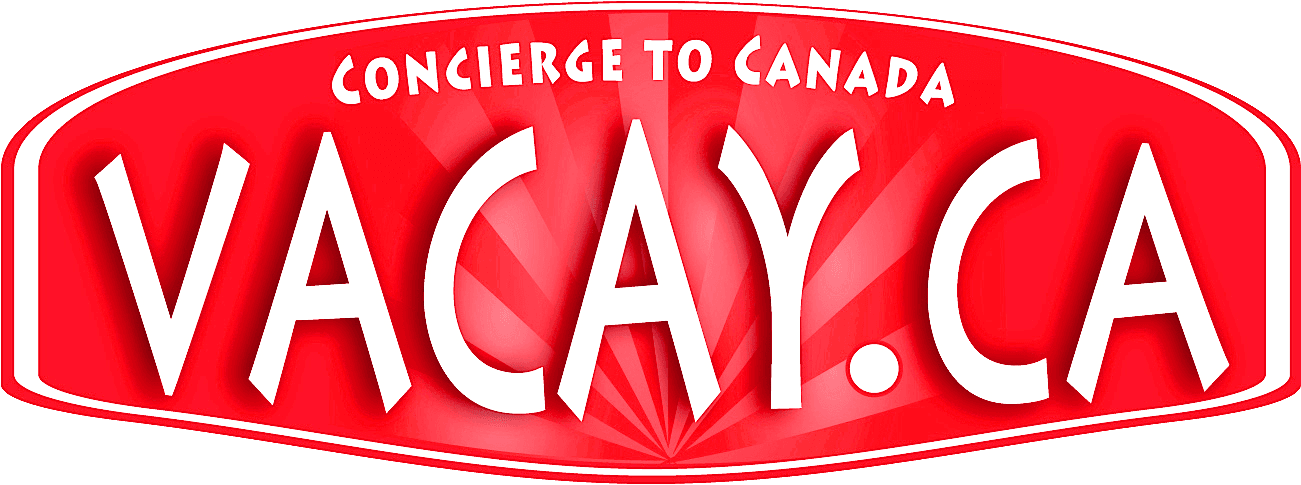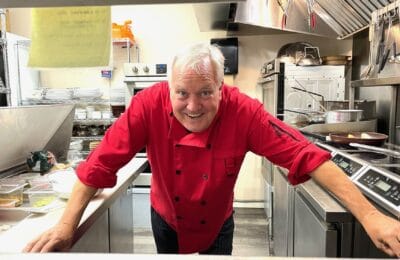
Could you ever get bored of this sight? The aurora borealis light up the northern sky on a regular basis over Dawson City. (Robert Postma photo)
For many a year, the “strange things done in the land of the midnight sun” have provided the material to weave a good yarn. Most notable, of course, are Robert Service’s epic poems, like the “Ballad of Blasphemous Bill” or the “Cremation of Sam McGee” — the latter, supposedly based on a story Service had heard about a Dawson City man who cremated his friend. More recently, Canadian writer Elle Wild bases her modern-day thriller “Strange Things Done” in Yukon‘s town of quirks and characters. Dawson’s just one of those places where truth is often stranger than fiction, and magic is around every corner.
It’s no wonder then that Dawson City ranks among the 2021 Vacay.ca 20 Best Places to Visit in Canada, a list sponsored by the travel-trivia mobile game, Trippzy, and compiled by the travel writers and editors of the digital magazine. The ranking, which will be published in January, is focused on destinations that provide experiences suited to limiting the spread of the coronavirus — and celebrating the end of the pandemic as that day appears likely to come later in the year.
At a latitude above 64 degrees north, 240 kilometres (145 miles) below the Arctic Circle and close to the Alaska border, Dawson City is really Canada’s last frontier. An end-of-the-road type of town, you don’t just end up here on your way somewhere. On top of that, the environment is harsh and winters are long and cold.

The Yukon River, seen from the top of Dome Road, flows through Dawson City and its surrounding wilderness. (Adrian Brijbassi file photo for Vacay.ca)
But ask any one of the 1,800 residents, and you’re likely to get a story on why they were drawn to the place like a bee to honey. Like Jesse Cooke from Ontario, now owner of local tour company, the Klondike Experience, who says, “I came for the adventure of it all, the natural environment, and the sheer distance from home. But I stayed because of the people, the sense of community, and the slower pace of life. The culture made me fall in love with Dawson, more than anything.”
Just the natural phenomenon of daylight hours in Dawson makes it magical — the extreme darkness and lightness at either end of the annual solstices. Winter gives you a little more than four hours of daylight and no sunrise until 11 am. You might think the winters would be hardest, but Cooke, who is on his 16th season, says, “Honestly, I prefer winter to summer. I find it exhausting that the sun never sets in summer. Everyone seems to be in a hurry, the tourism industry is slammed busy, and there is never enough time! I love the darkness of winter and the way that everything slows down.”
Then there are the aurora borealis that are so common Cooke says he has a friend who won’t look upwards for anything less than dancing purples. But for most people, including Cooke, they never get old, and if there’s a real light show happening, chances are if you’re in a Dawson City bar, someone will yell “northern lights”, causing an en masse exit and a moment of silence to take in the colours so spectacular they inspire journeys from afar to witness.

Despite its small size, Dawson City has a number of historic buildings, including the cabin that belonged to writer Robert Service. (Kate Robertson photo for Vacay.ca)
It would seem silly to think that Dawson City, with a short growing season from the third week of May until the end of August, and a harsh, sub-Arctic climate, would have a thriving local food scene. But that would underestimate the hardy Dawsonites.
Originally a farming community from the Gold Rush days, the building of the Alaska Highway in 1942 allowed for affordable shipping of goods, and many farms went out of business. During the past five years or so, with an increasing appetite for self-sufficiency, new farms are once again starting up. A Saturday farmer’s market in the centre of town thrives in the summer (I counted at least a dozen food-filled tables when I was there). Aside from the vegetable growers, there’s a local creamery that makes its own artisan cheese and yogurt (Yukon’s only dairy farm), a birch syrup producer, and even a teaching farm, operated by the Tr’ondek Hwech’in First Nation, the only Indigenous-owned working farm north of 60 degrees. Apparently, the midnight sun gives off more than the average number of daylight hours to support the shorter growing season.
Feeling Alive in Tombstone Park

Tombstone Territorial Park is a hiker’s delight with trails and broad expanses of scenery. (Kate Robertson photo for Vacay.ca)
In any universe, the words “magical” and “Tombstone Territorial Park”, belong in the same sentence. Called Canada’s Patagonia, located approximately 110 kilometres (65 miles) north of Dawson City, the park is about as remote as you can get. The park gets its name from Tombstone Peak’s resemblance to a grave marker (the black jagged summit is coloured by dark magma that forced its way between the sedimentary layers) and though it might sound desolate, the dramatic landscape is very much alive, with colourful lichen, stunted shrubs, and abundant wildlife.
If you’re comfortable in the backcountry, you can hike in, but a helicopter ride with Trans North Helicopters will also get you there, providing a bird’s-eye view of the alpine lakes, rugged rocky peaks, and boreal forest regions along the way. In the south end of the park, you can find another strange phenomenon, the Yukon Ditch, a system of pipes, flumes, and trenches of wood and steel built during the Klondike Gold Rush to transport water to the gold fields in Dawson City, 160 kilometres (95 miles) away.
Dawson itself is a mish-mash of late-1800’s buildings, some fancy Victorian-style houses, and rustic log cabins. Due to the permafrost, the streets are unpaved, with boardwalks for sidewalks. Local taverns still have the feeling (and décor) of the “ladies and gents” beer parlours of the 1970s.
Old Dawson City Brings In the New

Dawson City’s Midnight Sun Hotel is being renovated in preparation for a scheduled grand opening in 2021. (Kate Robertson photo for Vacay.ca)
Even though the town plays strongly on its history, it isn’t stuck in the past. Innovative businesses are popping up, like Bonton & Co, a cute little eatery that uses local ingredients and its own in-house butcher/charcuterie to whip up amazing dishes. There’s the Dawson Lodge, a new boutique-hotel-meets-Airbnb accommodation. Perhaps most excitingly, there is the planned summer 2021 opening (pandemic permitting) of the Midnight Sun Hotel, a Gold Rush-era replica building that previously housed a 1980’s hotel. It is undergoing renovations for its 2.0 revival that will add a contemporary shine to the town.

Diamond Tooth Gerties Gambling Hall rekindles the mania of the Klondike Gold Rush, including stage entertainment of the era that’s updated with modern wit. (Kate Robertson photo for Vacay.ca)
You might think that such a remote wilderness town on the edge of a river started, like so many in Canada, as a fur-trading settlement. Although First Nations had seasonal camps here for thousands of years, there was no European settlement until the Klondike Gold Rush. Then Dawson City swelled to more than 30,000, with the miners, prostitutes, bankers (like Robert Service), saloon owners, and shopkeepers that go along with a “boom town”. As the largest city west of Winnipeg and north of Seattle, it was dubbed the Paris of the North.
MORE DAWSON: Lure of the Midnight Sun
All of those gold-seekers and dreamers didn’t come because it was easy to get to. It was a treacherous hike through rugged mountain terrain. Even pack animals couldn’t make it over the Chilkoot Pass, so people had to lug their own supplies up and down a frozen mountainside, before catching a boat to navigate the hundreds of miles of Yukon River rapids. Such an intense trip attracted hardy adventurers and the most flamboyant characters, whose stories are embedded in the local culture. Like Bombay Peggy’s, a former brothel that’s turned into a boutique hotel (complete with décor and photos of the “ladies” who formerly inhabited it). Or Diamond Tooth Gertie’s, a casino and dancehall that still offers up ragtime music and can-can girls’ entertainment.
Dawson’s notable characters are still celebrated and legendary. Like Caveman Bill, who supposedly someone bet couldn’t live in a cave for six weeks. He’s been there now for years, using an exercise bike to generate power for his lighting. Or Dick Stevenson, a riverboat captain who found a mummified toe in a jar of alcohol in 1973 when he was cleaning a remote cabin. Rumour has it the appendage traces back to the turn of the 19th century when a rumrunner’s toe was frozen in a blizzard. His brother chopped it off to prevent gangrene and placed the toe in a jar of alcohol.

The next Sourtoe Cocktail could be yours — are you up for the challenge? (Kate Robertson photo for Vacay.ca)
Captain Dick founded the Sourtoe Cocktail Club to initiate residents who had survived at least one Yukon winter. Today, anybody can become part of the club at the Downtown Hotel. To earn your certificate, as you drink your shot of alcohol, the black shrivelled digit (which looks like a very old pepperoni stick) must touch your lips. There are so many takers for this Sourtoe Cocktail ritual (I couldn’t resist it myself, even though before I arrived I swore I wouldn’t), that in 2021, if the pandemic lifts, they will reach No. 100,000, an event to be celebrated with a special version of the cocktail. There will also be a formal ceremony to honour Captain Dick who died in 2019, and donated all 10 toes to the cause. (In my opinion, even stranger than the ritual itself is that various toes have been either swallowed or stolen over the years.)
In the summer, Parks Canada offers a “Strange Things” walking tour, where a tour guide like Miriam (one of those people who visited once and then hasn’t left), will tell you the stranger-than-life tales of the characters behind the buildings. “Dawson attracts the colourful 5 per cent,” she says. “If you’re not running from something, you’re looking for something here.”
So beware. If you think you might be part of that 5 per cent, make sure you have your affairs in order before you leave home. For the other 95 per cent, enjoy your visit and the strange and magical tales of the land of the midnight sun.
MORE ABOUT VISITING DAWSON CITY

Bombay Peggy’s was home to a brothel during the Gold Rush era and is now a boutique hotel with cheeky nods to Dawson City’s hedonistic past. (Adrian Brijbassi file photo for Vacay.ca)
When to Go: Remember that the Yukon Territory is north of 60, so spring comes later than it does in Canada’s provinces. So if you’re looking for non-winter activities, plan the timing. For more info contact, check Yukon Tourism or DawsonCity.ca.
Getting There: Drive 5-6 hours north and east of Whitehorse on Klondike Highway or book a flight from Whitehorse with Yukon’s award-winning airline, Air North.
Where to Stay: Bombay Peggy’s, based in the centre of town, is a great place to stay to immerse yourself in the local historical folklore. There are seven rooms and each one has a theme for décor. Address: 2nd Avenue and Princess Street. Room Rates: Rooms range from $95 to $159 in March 2021 (the hotel is closed until then).
Note: Kate Robertson was a guest of Yukon Tourism during her stay, however, the organization had no editorial input for this article.







